If the back squat is the cool guy everyone wants to hang out with, then the split squat is his older, less cool but more practical older brother. You can’t lift as heavy with the split squat, but you’ll target one leg at a time and challenge your core stability and balance. The split squat is one of the best leg exercises for adding mass to one leg at a time, improving your mobility, and enhancing overall body awareness. And, yes, all of these benefits will carry over to your traditional back squat.
Below, we teach you how to do picture-perfect split squats and outline the exercise’s benefits, set and rep recommendations, and alternatives and benefits.
- How to Do the Split Squat
- Benefits of the Split Squat
- Muscles Worked By the Split Squat
- Who Should Do the Split Squat
- Split Squat Sets, Reps, and Programming Recommendations
- Split Squat Variations
- Split Squat Alternatives
- Frequently Asked Questions
Split Squat Video Guide
Below, former BarBend Training Editor Jake Boly describes how to do a split squat and how the exercise differs from its relative the lunge.
How to Do the Split Squat
Below is a step-by-step guide on how to properly set up and perform the split squat, in this case, the standard split squat instead of the Bulgarian split squat, which is detailed in the variations section. Using kettlebells or a barbell may alter the directions below slightly. Generally, these are solid guidelines for executing a split squat.
Step 1 — Find Your Split Stance
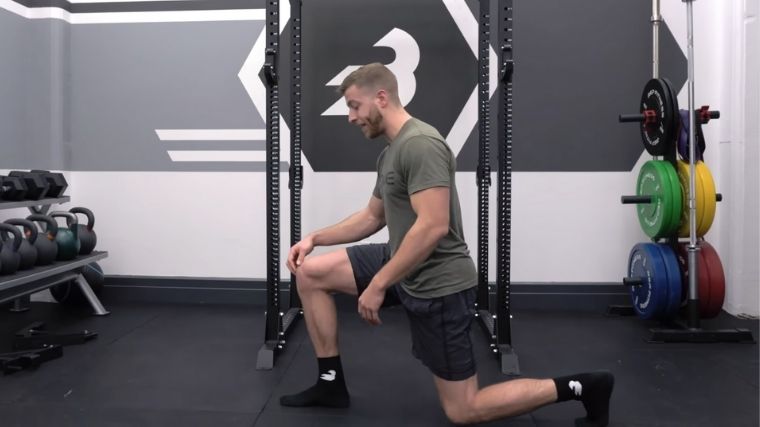
Stand tall holding a pair of dumbbells with your feet under your hips. Take a step forward with one leg so that it’s about three to five feet in front of you. The distance between your feet will vary greatly depending on a person’s body type, but a general rule of thumb is that both thighs should be bent 90 degrees when at the bottom of the squat.
Form Tip: Point your toes forward, which ensures your back hip won’t turn outward.
Step 2 — Align the Torso and Descend
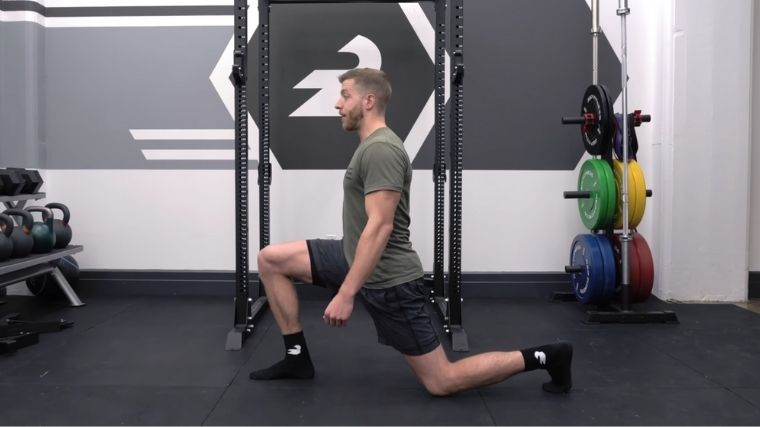
Squat down, keeping your chest up, until your back knee touches the floor. Your back heel will lift off the floor, which is totally normal as it allows you to squat down.
Form Tip: Try to stay centered over the floor, not shift too far forward or backward.
Step 3 — Contract and Stand Up
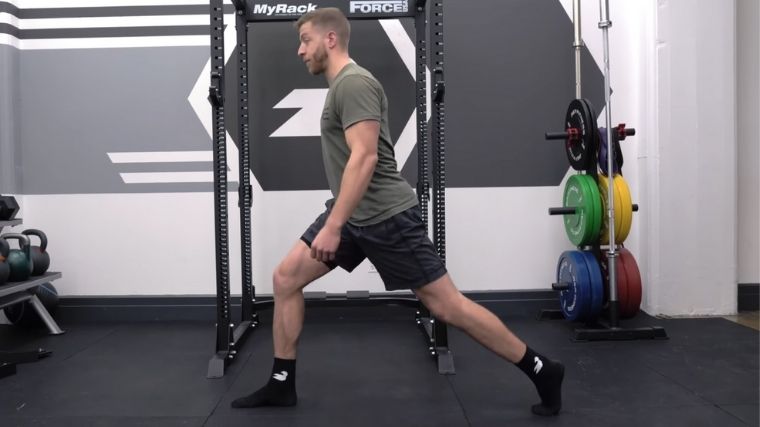
Make sure that you feel most of the contraction in your lead leg. Tense your arms, core, and back, and then stand back up, maintaining a split stance.
Form Tip: Settle at the top of the movement and then repeat for repetitions on one leg and switch sides.
Benefits of the Split Squat
Here are three benefits of performing split squats:
Address Muscular and Movement Asymmetries
Often, lifters and athletes have a dominant leg, leading to muscle imbalances, movement compensation patterns, and overuse injury. The split squat has you focus on one leg at a time, so therefore you’re able to better strengthen, well, one leg at a time. This means you’ll be less prone to injuries that could be caused by muscular compensations — that is, a discrepancy in form due to one leg making up for the other leg’s incompetence.
[RELATED: Best Mobility Exercises]
Unilateral Hypertrophy and Strength
Unilateral exercises have been shown to increase muscle growth and address bilateral (two-legged) deficit issues, leading to increased bilateral performance and strength. Increased muscle activation is a key benefit of performing movements such as split squats.
Application to Sport and Human Movement
Whenever you run, jump, sprint, and cycle, one leg is, at some point, doing more work than the other. By performing a split squat, you’ll bolster unilateral strength, enhancing your ability to move. You don’t need a heavy split squat to walk up the stairs more efficiently, but your joints are more effective if used more often. So by performing knee flexion — which is a key movement in all of the activities mentioned earlier — your joints will be better prepared to run, squat, and jump.
[Read More: The Most Effective Workout Splits, Created by Our Experts]
Muscles Worked by the Split Squat
The split squat is a unilateral leg exercise that increases lower body strength, muscle hypertrophy, balance, and stability. Below is a breakdown of the primary muscle groups involved in this exercise.
Gluteals
The glutes are responsible for hip extension and stabilizing the pelvis during the split position. Athletes/lifters can manipulate the depth of the split to isolate the glutes and hamstrings further.
Quadriceps
The quadriceps extend the knee. In other words, they’re what initiate the squat itself. You can bring your feet closer together to induce more knee flexion (though we don’t suggest keeping them too close together).
Hamstrings
The hamstrings offer balance, stability, and strength in the lowering phase of the split. This can help to increase hamstring strength and size and improve your ability to run and jump.
Core
The core muscles, such as the obliques and rectus abdominals, stabilize the core and support a rigid torso to allow the hips to function properly. Additionally, the core works to resist rotational forces sometimes caused by inadequate balance and stability.
Who Should Do the Split Squat?
Below are some reasons why strength, power, and fitness athletes can benefit from performing the split squat.
Strength and Power Athletes
- Powerlifters and Strongman Athletes: While competition lifts are bilateral and closed-chain (stationary), unilateral training increases strength, hypertrophy and minimizes asymmetries. Strongman athletes need to express high amounts of strength and power and move athletically while loaded. Therefore, loaded unilateral training will directly benefit these strength athletes.
- Olympic Weightlifters: Weightlifters need balance, coordination, and unilateral strength to pull off moves like the split jerk. Strength and power athletes who lack these fundamental attributes can increase their risk of injury, increase muscle and movement disorders, and diminish their maximal lower body strength and hypertrophy potential.
General Population & Fitness Athletes
Any general gym-goer and fitness athlete can reap the above benefits by incorporating split squats into their routine. The split squat is also a generally effective movement, so you’ll get stronger, bigger, and develop conditioning by using them.
Runners, Cyclists, and Endurance Athletes
Runners, cyclists, and other endurance athletes rely heavily on unilateral leg performance. Split squats can increase muscle mass, strength, and muscular endurance; they allow an athlete to train similar angles and coordination/stability requirements often seen in their sport/fitness. Integrating the split squat into basic strength work or more volume-based workouts.
Split Squat Sets, Reps, and Programming Recommendations
Here are three set and rep schemes to apply to the split squat. These are just starting points. If you’d like to adjust these ranges, you’re free to do so. Make them work for you.
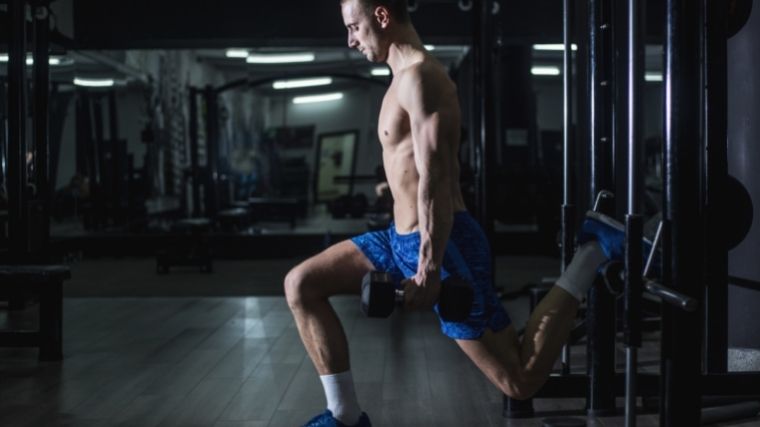
To Gain Muscle
Hypertrophy is accomplished by adding training volume (more reps), time under tension, and/or training towards fatigue. Do three to five sets of eight to 15 repetitions, with 90-120 second rest periods with moderate to heavy loads.
To Gain Strength
Unless you’re a competitive powerlifter who needs to train the back squat, you can make heavy split squats as the main movement in your strength training sessions. Perform three to five sets of five to 10 repetitions with 90-120 second rest periods with moderate to heavy loads.
To Improve Muscle Endurance
Perform two to three sets of 20-30 repetitions with 45-60 second rest with light to moderate loads. Since the reps are so high already, aim to add a set or two to this scheme or adjust the tempo, so you’re performing the same reps but more slowly.
Split Squat Variations
Below are three split squat variations that coaches and athletes can use to keep training varied and progressive.
Bulgarian Split Squat
The Bulgarian split squat increase’s the range of motion of the exercise by having the lifter elevate their back leg on a training bench, bumper plates, or a plyo box.
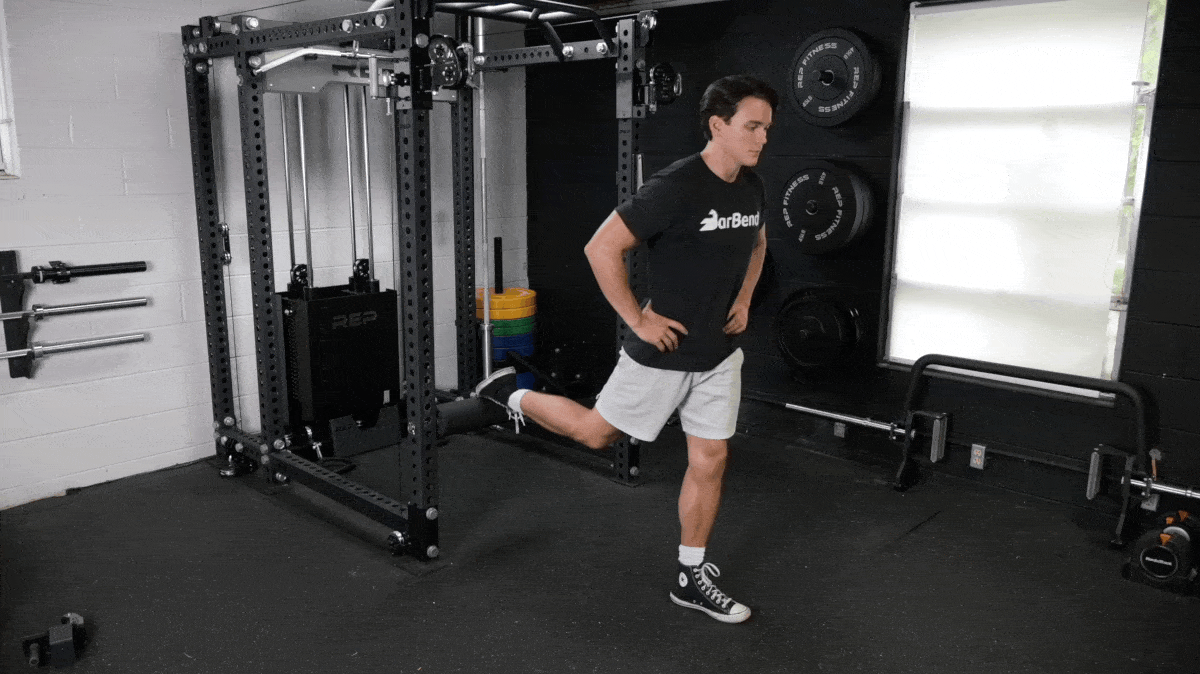
Front Rack Split Squat
This variation has the lifter hold weight in front of them. You can use a goblet position or a Zercher position. Front rack split squats reinforce a vertical torso, further engaging the quadriceps, anterior core muscles, and upper back. The below video highlights a specialized position that prioritizes proper positioning for a more drastic leg pump.
TRX/Suspension Split Squat
The suspension/TRX split squat can be done with TRX straps or even gymnastic rings. The lifter places their back foot into a stirrup/loop, very similar to the Bulgarian split squat. By using the suspension systems, you increase the need for unilateral stability and coordination.
Split Squat Alternatives
Below are three split squat alternatives coaches and athletes can use to increase strength and muscle hypertrophy.
Front-Foot-Elevated Reverse Lunge
The front-foot-elevated reverse lunge targets similar movement patterns and muscle groups as the split squat, with the added benefits of dynamic movement and increase knee flexion angles in the lead leg. This increased knee flexion leads to quadriceps development and can train the specific angles found in the deep squat.
Walking Lunge
The walking lunge is a dynamic version of the stationary lunge and split squat, increasing balance, coordination, and applicability to open-chained movements like running, jumping, and athletics.
Step Up
The step-up increases quadriceps and overall leg development, much like the split squat. You can also challenge stability and balance by having a lifter/athlete step onto a box/bench/supportive object.
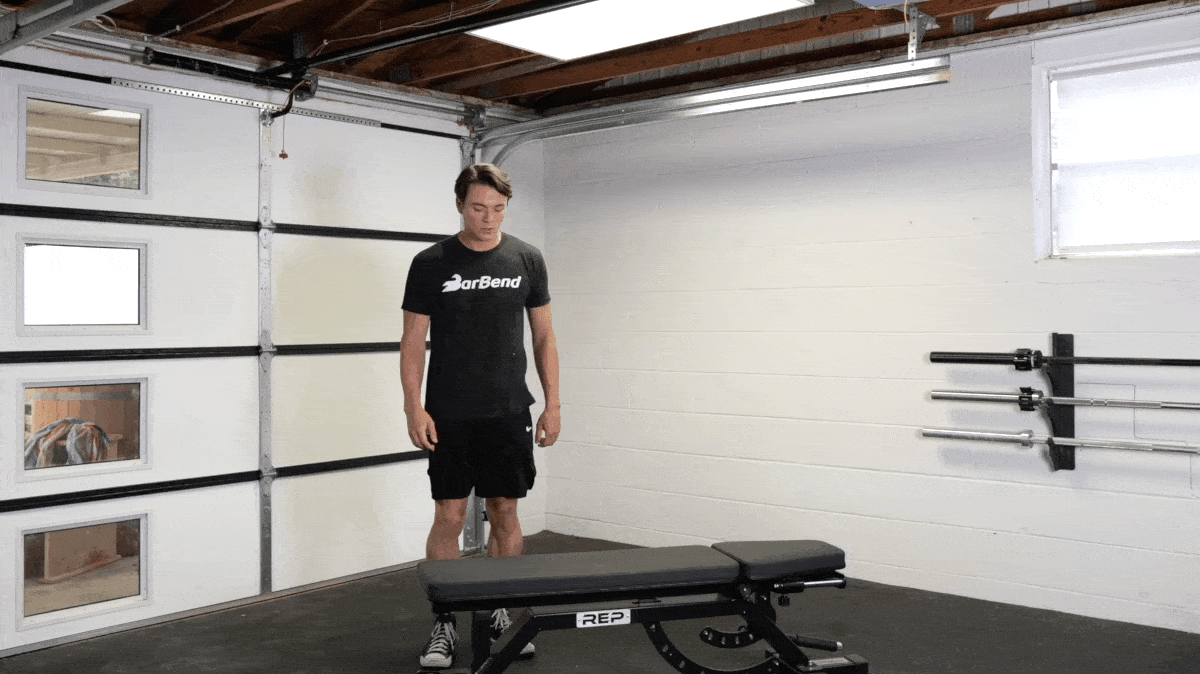
FAQs
What is the difference between a split squat and a Bulgarian split squat?
The standard split squat has the lifter place both feet on the ground. The Bulgarian split squat has the lifter place their back leg up on a bench, box, or other supported position. By placing the back leg onto something during the Bulgarian split squat, you increase the demands on the lead leg.
How far apart should my feet be during the split squat?
The more forward your front foot is during the split squat, the more hip flexion will occur. To isolate the quadriceps and glutes, take a more narrow stance. If you want to attack the glutes and hamstrings, a wider stance will suffice. However, you may be better off doing other movements like good mornings and Romanian deadlifts as these better target the hamstrings and glutes.
Are split squats bad for knees?
Generally speaking, the split squat and most other lower body exercises are beneficial to knee health as they help build the muscles that support the knee (quadriceps, hamstrings, and glutes). Additionally, they help increase knee stability and promote joint movement that can translate to daily life, physical activity, and sports.